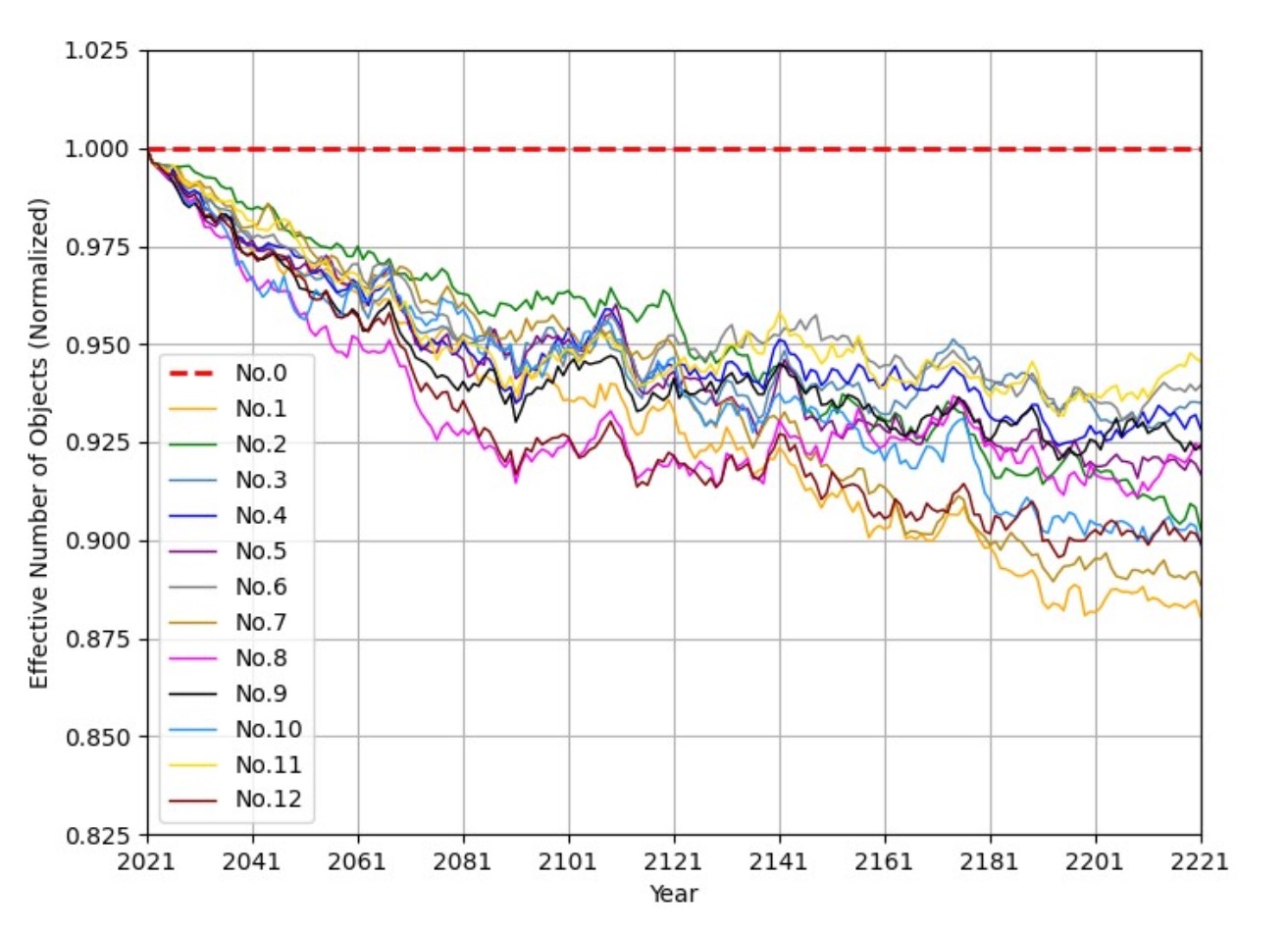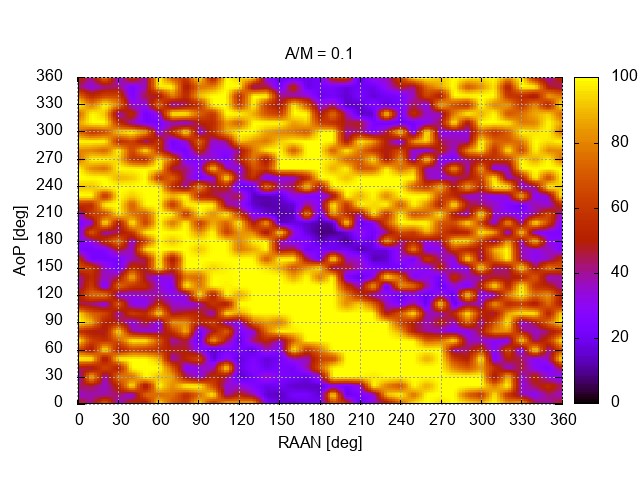Long-term orbital environment prediction by orbital debris evolutionary model
JAXA Supercomputer System Annual Report February 2021-January 2022
Report Number: R21EG3105
Subject Category: Research and Development
- Responsible Representative: Hiroyuki Sugita, Research and Development Directorate, Research Unit II
- Contact Information: Nagaoka Nobuaki(nagaoka.nobuaki@jaxa.jp)
- Members: Ryusuke Harada, Yasuhiro Kitagawa, Satomi Kawamoto, Nobuaki Nagaoka, Norihiko Yamaguchi
Abstract
Increase of space debris is a problem for reliability of future space activity. JAXA has researched space debris related technology for space debris mitigation and environmental remediation. The effectiveness of space debris countermeasures is evaluated based on the prediction of future orbital environment using the orbital debris evolutionary model (NEODEEM) jointly developed by JAXA and Kyushu University.
Reference URL
Please refer to http://www.kenkai.jaxa.jp/eng/research/debris/debris.html .
Reasons and benefits of using JAXA Supercomputer System
NEODEEM predicts the situation of over 200 years orbital propagations of more than 20000 elements and orbital events by using Monte-Carlo method (evaluate the average of 100 runs). Therefore, JSS3 is used to reduce run time and to process a large amount of data. TOKI-RURI is used for compatibility with PC version (Linux, WINDOWS).
Achievements of the Year
As part of the evaluation of the future orbital environment, the Debris Index, which is currently proposed by each institution, was compared and evaluated using the orbital debris evolutionary model (NEODEEM). We selected 50 ADR (Active Debris Removal) target debris based on each index and confirmed the improvement effect of the orbital environment (Fig.1). We also investigated whether the small unknown debris in low earth orbit is generated by the collision with the small debris from the rocket bodies left in the geostationary transfer orbit. (Fig.2,3). The results of ASAT (COSMOS-1408 satellite) conducted by Russia last year were also evaluated and examined using NEODEEM.
Based on these results, the effectiveness of debris mitigation measures is evaluated and used as a basis for discussing international rules.

Fig.1: Predictions of the normalized effective number of debris (after ADR of each top 50 objects selected by each Debris Index)
Publications
– Peer-reviewed papers
Satomi Kawamoto, Nobuaki Nagaoka, Yasuhiro Kitagawa, Ryuusuke Harada, Toshiya Hanada “Considerations on the lists of the top 50 debris removal targets” JSSE
– Non peer-reviewed papers
1.Satomi Kawamoto, Nobuaki Nagaoka, Yasuhiro Kitagawa, Ryuusuke Harada, Toshiya Hanada “Considerations on the lists of the top 50 debris removal targets” IAC 2021 Dubai
2.Ryusuke Harada, Satomi Kawamoto, Nobuaki Nagaoka,Toshiya Hanada “Environmental Impacts of GTO Objects on LEO” ISTS
– Oral Presentations
1.Satomi Kawamoto, Nobuaki Nagaoka, Yasuhiro Kitagawa, Toshiya Hanada “Evaluation of impacts of large constellations using a debris evolutionary model for considering environment capacity” 8th European Conference on Space Debris
Usage of JSS
Computational Information
- Process Parallelization Methods: Assigning Monte-Carlo runs with same initial conditions to multiple cores
- Thread Parallelization Methods: N/A
- Number of Processes: 20 – 30
- Elapsed Time per Case: 12 Hour(s)
JSS3 Resources Used
Fraction of Usage in Total Resources*1(%): 0.16
Details
Please refer to System Configuration of JSS3 for the system configuration and major specifications of JSS3.
| System Name | CPU Resources Used(Core x Hours) | Fraction of Usage*2(%) |
|---|---|---|
| TOKI-SORA | 0.00 | 0.00 |
| TOKI-ST | 1079359.34 | 1.33 |
| TOKI-GP | 0.00 | 0.00 |
| TOKI-XM | 0.00 | 0.00 |
| TOKI-LM | 2154.55 | 0.16 |
| TOKI-TST | 0.00 | 0.00 |
| TOKI-TGP | 0.00 | 0.00 |
| TOKI-TLM | 0.00 | 0.00 |
| File System Name | Storage Assigned(GiB) | Fraction of Usage*2(%) |
|---|---|---|
| /home | 30.00 | 0.03 |
| /data and /data2 | 300.00 | 0.00 |
| /ssd | 300.00 | 0.08 |
| Archiver Name | Storage Used(TiB) | Fraction of Usage*2(%) |
|---|---|---|
| J-SPACE | 23.10 | 0.16 |
*1: Fraction of Usage in Total Resources: Weighted average of three resource types (Computing, File System, and Archiver).
*2: Fraction of Usage:Percentage of usage relative to each resource used in one year.
ISV Software Licenses Used
| ISV Software Licenses Used(Hours) | Fraction of Usage*2(%) | |
|---|---|---|
| ISV Software Licenses(Total) | 0.00 | 0.00 |
*2: Fraction of Usage:Percentage of usage relative to each resource used in one year.
JAXA Supercomputer System Annual Report February 2021-January 2022




